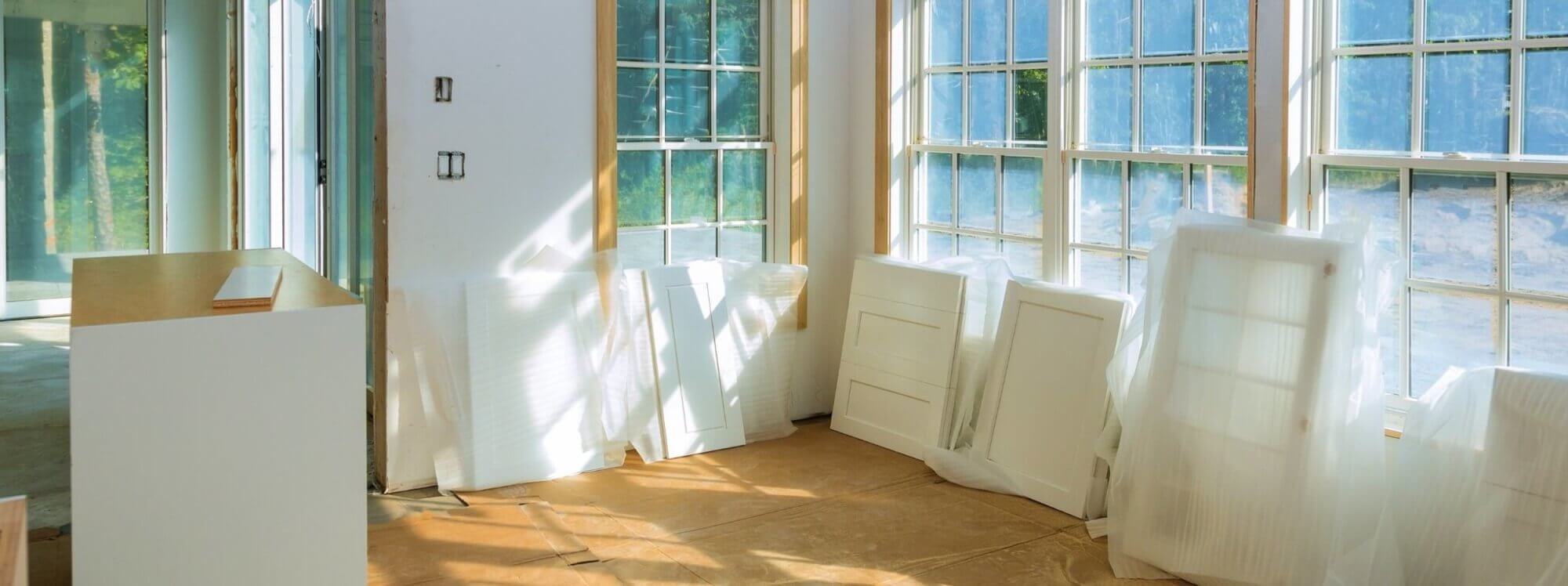Whether you’re planning a small upgrade or a big restoration, home renovations are costly. But there are ways to cut costs and stick to your renovation budget without cutting corners. Follow our top-10, tried-and-true ways to save money at every stage of your home renovation project.
1. Budget Wisely
Busting the budget is a top concern for many homeowners. That’s why it’s critical to start with a realistic budget from the outset—and stick to it. In fact, it’s always a good idea to pad your bottom line for those unexpected surprises that could otherwise grind your renovation to a halt.
2. Pass on the Plumbing
Work with what you have when it comes to existing plumbing locations. If you’re set on a bathroom or kitchen makeover, leave the sink, tub, or toilet locations where they are, suggests Remodelista. Most U.S. plumbing lives inside your walls, and it can be expensive to change.
3. Prep Before the Pros
Even if you’re not handy around the house, you can still save cash with some of the simpler tasks. As A Beautiful Mess reminds us, the pros charge by the hour. Opt for DIY demo, prep, painting, and cleanup to add hundreds back into your budget. However, be sure to not bite off more than the basics, otherwise you run the risk of repairs.
4. Put a Pin in Remodeling
Unless a gut renovation is absolutely necessary, reusing what you have can save a fortune. Realtor.com suggests getting creative with your existing features and fixtures. Freshen up your kitchen, for example, by staining cabinets, swapping knobs, or switching up molding.
5. Splurge for Keeps
What’s worth a little extra in your remodel? It’s a personal decision, but Extra Mile suggests looking to the permanent fixtures—the tub, windows, and appliances—for guidance. Countertops, by contrast, can be easily popped off and upgraded later, says Danny Lipford, home improvement expert.
6. Put Some Paint on It
Color can transform a space in a spectacular and cost-effective way. Before you ditch the old vanity or kitchen cabinets, give them a whole new look with a fresh coat of paint. Coupled with updated fixtures, a splash of paint can spruce up a space at a fraction of the cost.
7. Source Your Stone Direct
Granite countertops look great, but they can come at a steep price. HGTV advises going directly to the granite supply yards to score a sweet deal on what’s known as remnant stone. If you don’t have a lot of counter to cover, this is an ideal cost-saver.
8. Get Thrifty with Materials
As the saying goes, one man’s trash is another man’s clawfoot tub. (Or something like that.) Find the finishes you were searching for—at a fraction of the price. Thrift stores, Craigslist, even neighborhood garage sales are great sources of material.
9. Skip the Recessed Lighting
You may be surprised to learn that recessed lighting puts a big dent in your budget. Zillow reveals the reason why: labor. Cutting open the ceiling and insulating the cans requires time (and a skilled professional). Opt for mounted or hanging fixtures instead.
10. Take Advantage of Free Consultations
Home improvement stores have expanded their services by offering free on-site consultations. Before you balk at being sold, hear out the experts on how to proceed with your renovation plans. Free advice never hurts, and you may walk away with better ideas than when you started.
With the best-laid plans, your home renovation won’t break the bank. Some homeowners fund their renovation goals by using their home equity instead of their savings.
With no monthly payments or interest, a Hometap Investment can be a smart solution to realizing your renovation plans.
YOU SHOULD KNOW…
We do our best to make sure that the information in this post is as accurate as possible as of the date it is published, but things change quickly sometimes. Hometap does not endorse or monitor any linked websites. Individual situations differ, so consult your own finance, tax or legal professional to determine what makes sense for you.




